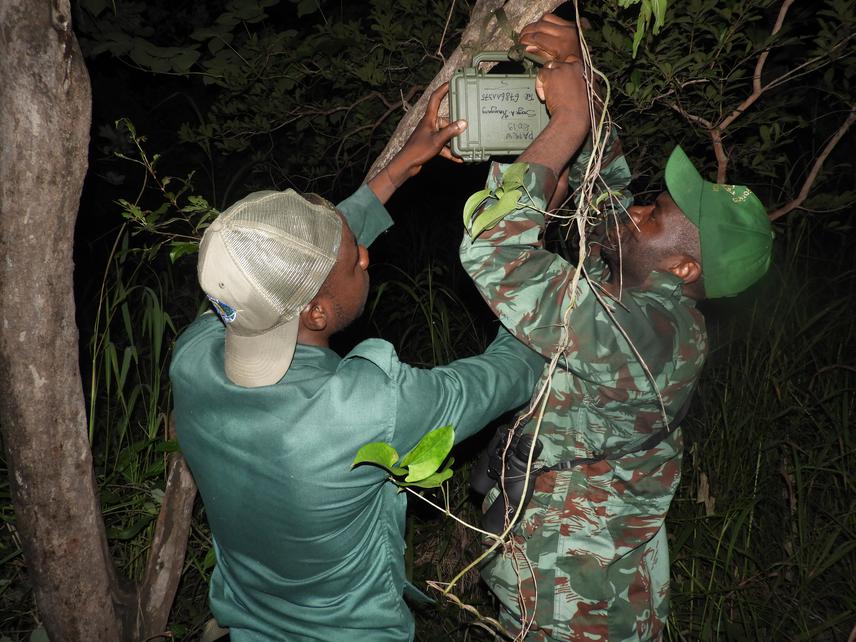Serge Alexis Kamgang
Other projects
8 Jan 2015
Influence of Forest-Savanna Ectone on Chimpanzee (Pan troglodytes ellioti) Socio-Ecology in Mbam Djerem National Park in Cameroon
15 Aug 2016
Effect of Habitat Variation on the Density of Chimpanzee (Pan troglodytes ellioti) in Mbam and Djerem National Park in Cameroon
11 Dec 2017
Characterization of the Nesting and Feeding Sites of Nigeria-Cameroon Chimpanzee (Pan troglodytes ellioti, Matschie 1914) in Mbam and Djerem National Park: Implications for Population Monitoring
The Mbam-Djerem National Park (MDNP), with its forest-savannah mosaic ecosystem, is known for its rich biodiversity. Home to many types of mammals, birds, reptiles, fish, and butterflies, it hosts the more robust Nigéria-Cameroon chimpanzee populations left in the wild. Our previous works in the MDNP confirmed a viable population of this apes living with other mammals among which some lacks accurate information on their status and are subject to poaching. The purpose of the current project is to increase knowledge and create a better understanding of how best to integrate passive acoustic monitoring into conservation strategies of wildlife in MDNP.

Installation of the SWIFT recorder on a tree. © Kaobara, 2021
Chimpanzee populations are rapidly declining, with grave threats posed by poaching, fragmentation of habitat, and frequent killing by local people for traditional use and to prevent crop-raiding. This current work is an asset to improve the conservation strategies of Nigeria-Cameroon chimpanzees in the Mbam-Djerem National Park (MDNP) in Cameroon. Chimpanzee is classified by IUCN as endangered and fully protected (Class A) under the forestry law in Cameroon. The result of this work will make available to managers information to facilitate the effective management of this species and the entire biodiversity in MDNP. Indeed, the passive acoustic monitoring which will be used is a powerful tool for biodiversity assessment over a range of spatial and temporal scale and can help to detect rare/cryptic species, human impacts, and even climatic shifts. Therefore, a set of information will be collected through this work including species occurrence, density, distribution, phenology, inter and intraspecific communication and anthropogenic threats etcetera. These will be done in real-time, providing researchers and managers with findings necessary for immediate decision making, and make adaptive management more feasible. The research will also help to enhance the ecological, social, and economic values the MDNP has to offer.
Furthermore, our findings will inform the management strategies to secure the MDNP, protect its wildlife, boost research and promote socio-economic growth which will enable communities to drive long-term benefits. Findings will be published in the peer-review journals, increasing the awareness and visibility of chimpanzee and biodiversity conservation efforts in MDNP. The capacity of park rangers and management staff on automatic acoustic recorders will be fostered which is salient for future ecological monitoring efforts and the enhancement of chimpanzee range-wide comparative assessments. Results will also help to update the 2011 IUCN Regional Conservation Action Plan of P. t. ellioti (Morgan et al. 2011).